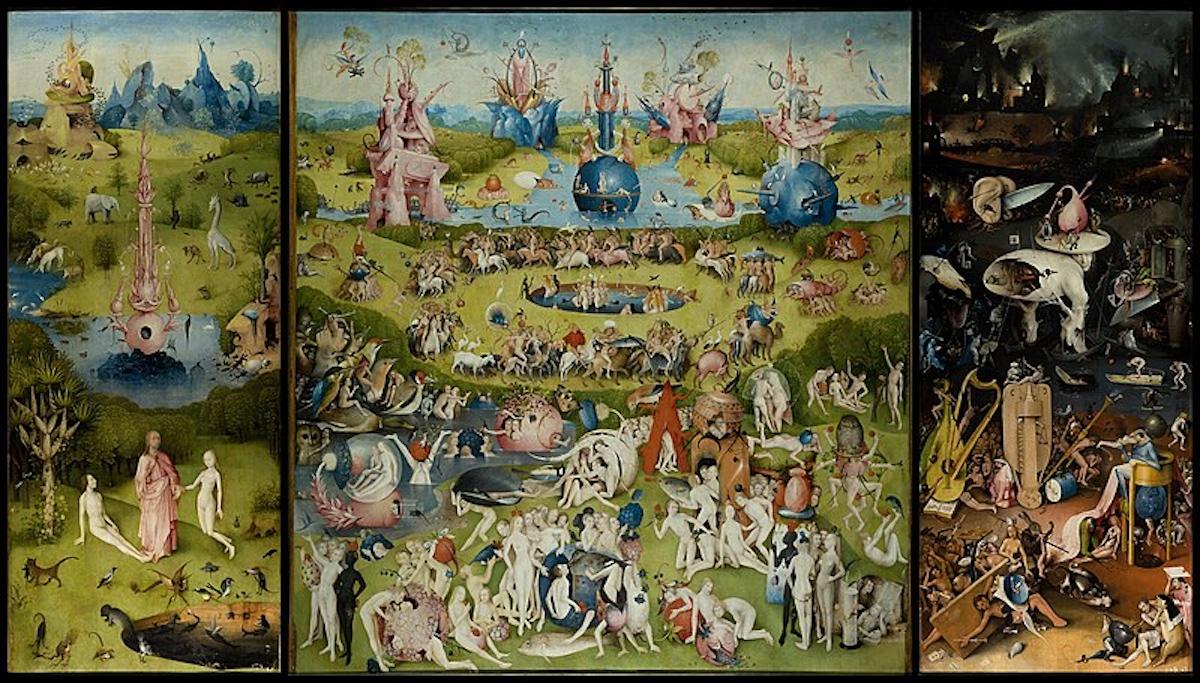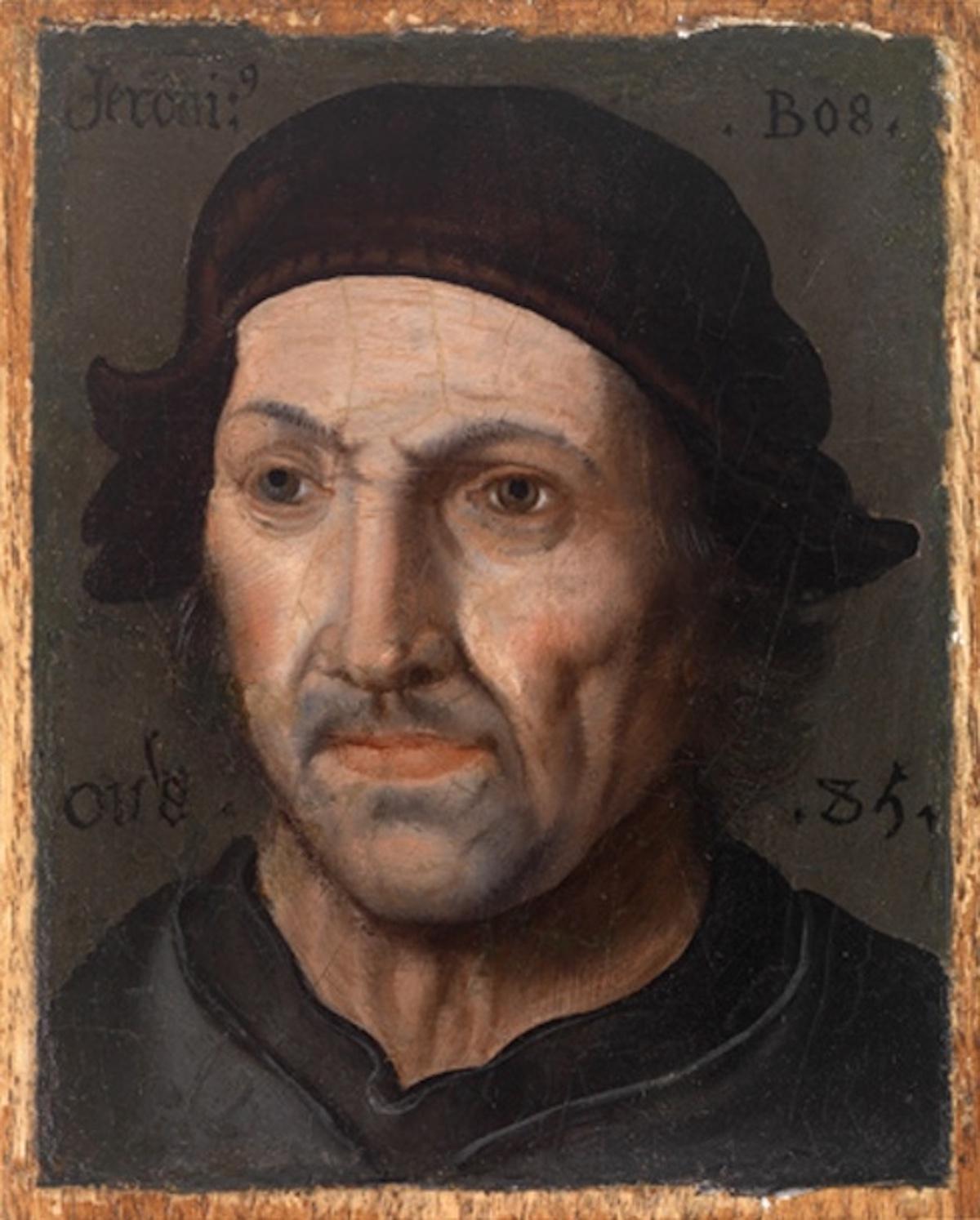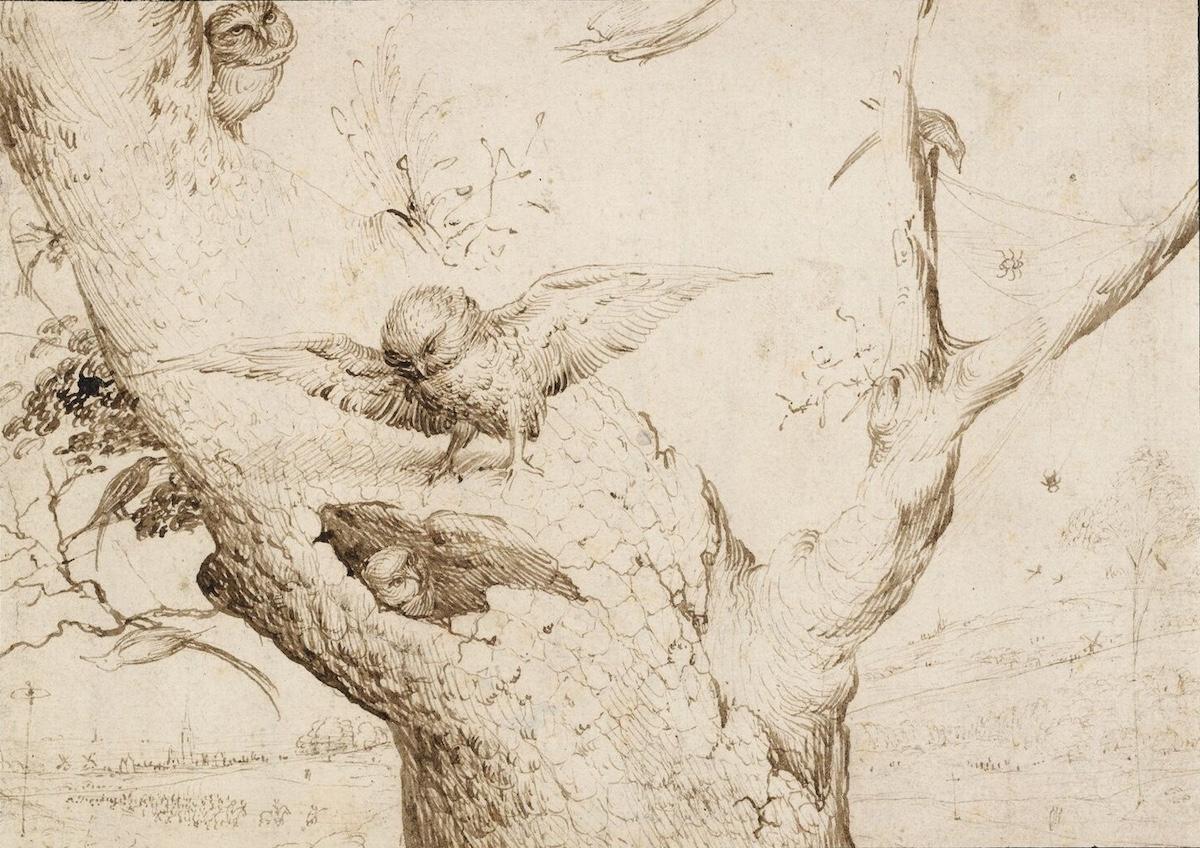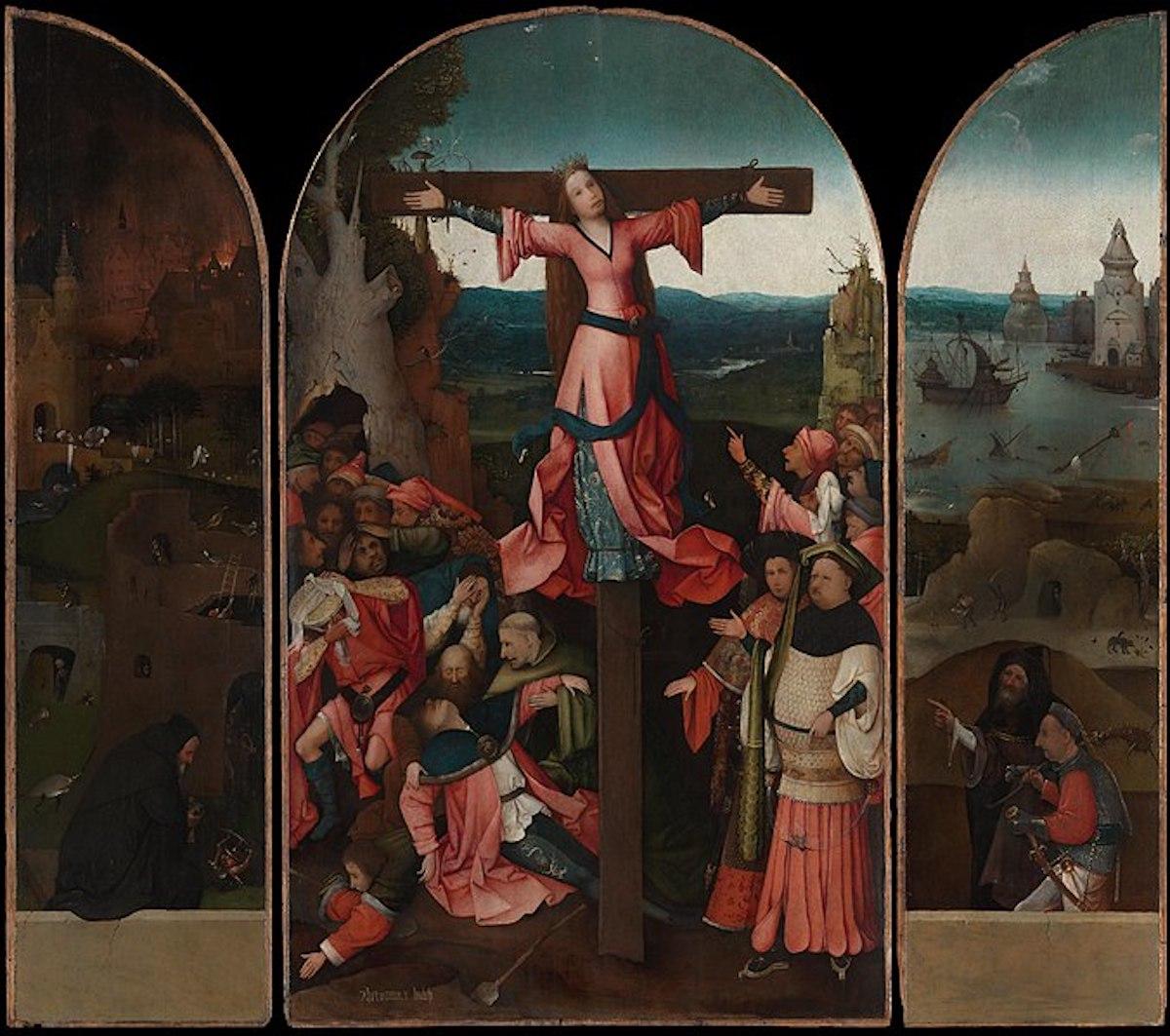Born into a family of painters, between 1450 and 1456, Bosch was the fourth of five children. Bosch lived in or around the Dutch city of ‘s-Hertogenbosch all of his life. His grandfather Johannes Thomaszoon van Aken was one of the preeminent area painters, and built a painterly family dynasty. Bosch probably learned his craft from his father, Antonius van Aken. While little historical information about Bosch’s father has survived, Bosch is referenced as a member of Antonius’s workshop in 1475.
On June 13, 1463, a catastrophic fire destroyed much of Bosch’s hometown, including his childhood home. Some historians believe witnessing this disaster influenced Bosch’s later works. Known as Jheronimus in his early years, Bosch married Aleid van der Mervenne, a wealthy merchant’s daughter, between 1480 and 1481. The land, money and status Bosch gained with this marriage allowed him to establish his own workshop.




























